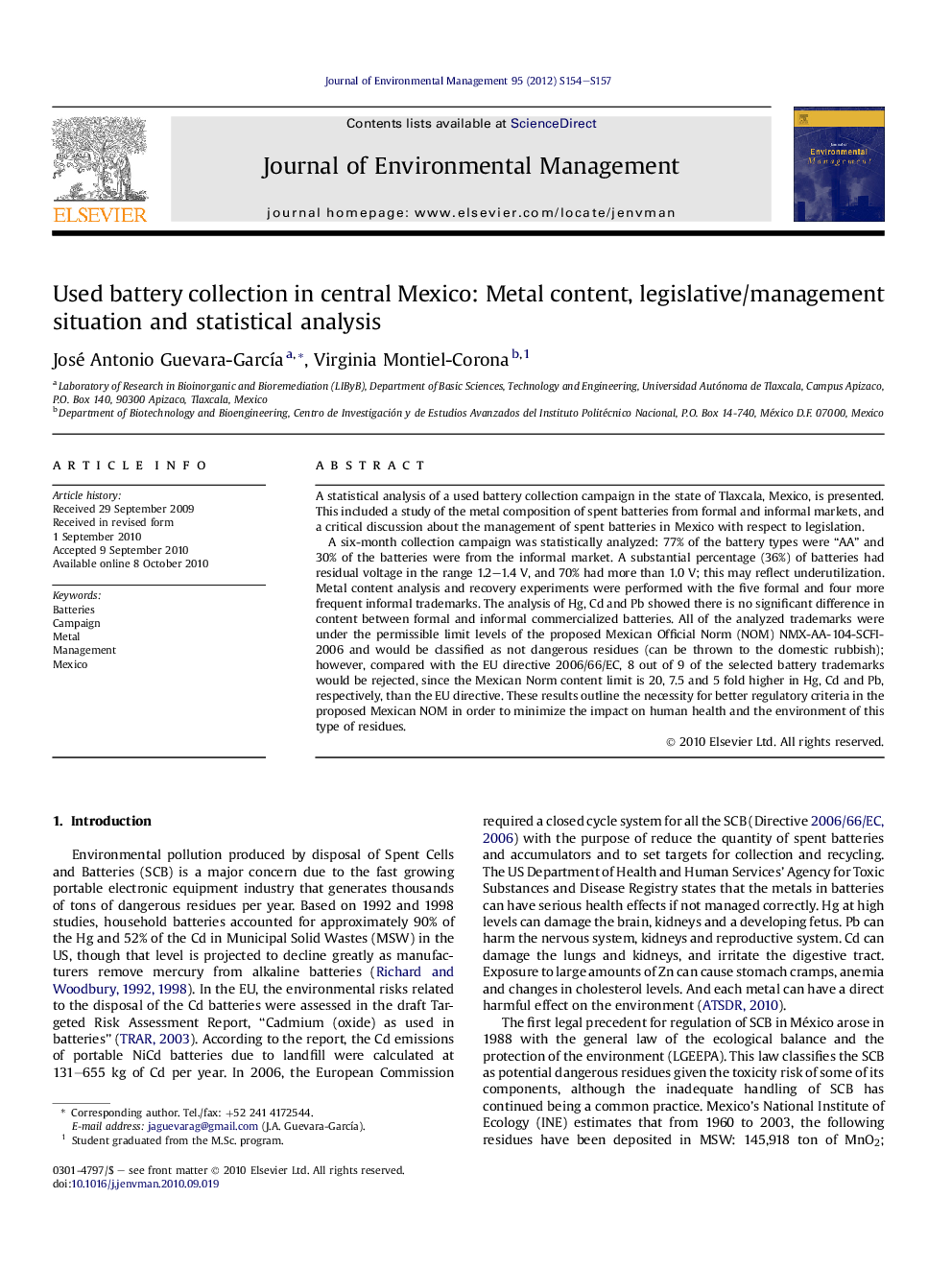| Article ID | Journal | Published Year | Pages | File Type |
|---|---|---|---|---|
| 1057045 | Journal of Environmental Management | 2012 | 4 Pages |
A statistical analysis of a used battery collection campaign in the state of Tlaxcala, Mexico, is presented. This included a study of the metal composition of spent batteries from formal and informal markets, and a critical discussion about the management of spent batteries in Mexico with respect to legislation.A six-month collection campaign was statistically analyzed: 77% of the battery types were “AA” and 30% of the batteries were from the informal market. A substantial percentage (36%) of batteries had residual voltage in the range 1.2–1.4 V, and 70% had more than 1.0 V; this may reflect underutilization. Metal content analysis and recovery experiments were performed with the five formal and four more frequent informal trademarks. The analysis of Hg, Cd and Pb showed there is no significant difference in content between formal and informal commercialized batteries. All of the analyzed trademarks were under the permissible limit levels of the proposed Mexican Official Norm (NOM) NMX-AA-104-SCFI-2006 and would be classified as not dangerous residues (can be thrown to the domestic rubbish); however, compared with the EU directive 2006/66/EC, 8 out of 9 of the selected battery trademarks would be rejected, since the Mexican Norm content limit is 20, 7.5 and 5 fold higher in Hg, Cd and Pb, respectively, than the EU directive. These results outline the necessity for better regulatory criteria in the proposed Mexican NOM in order to minimize the impact on human health and the environment of this type of residues.
